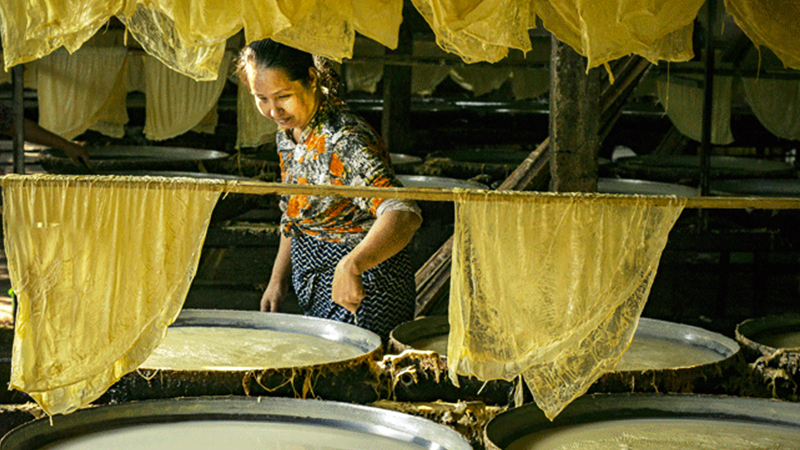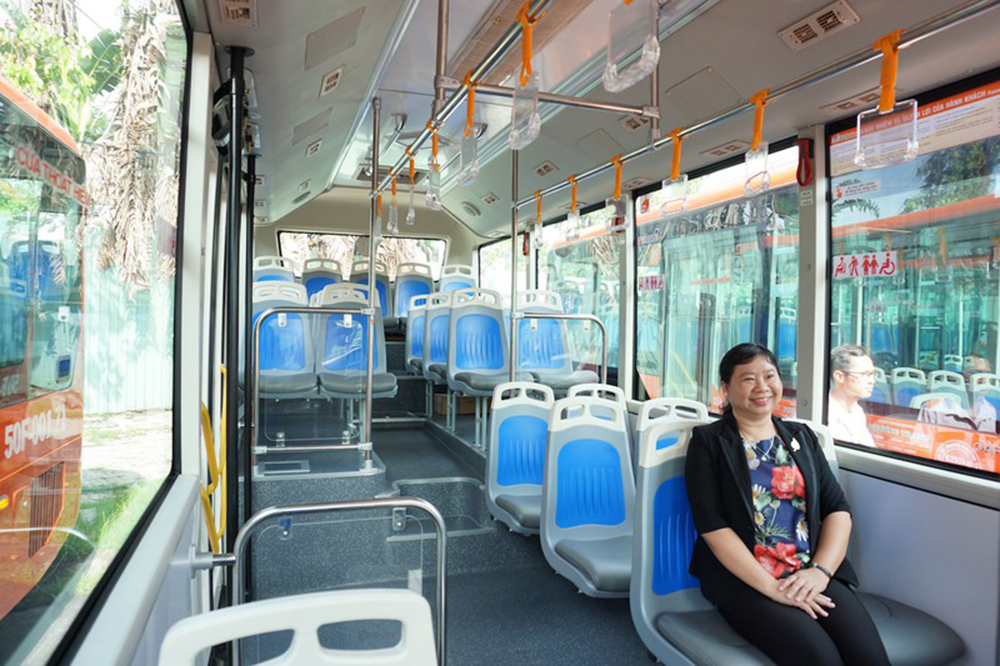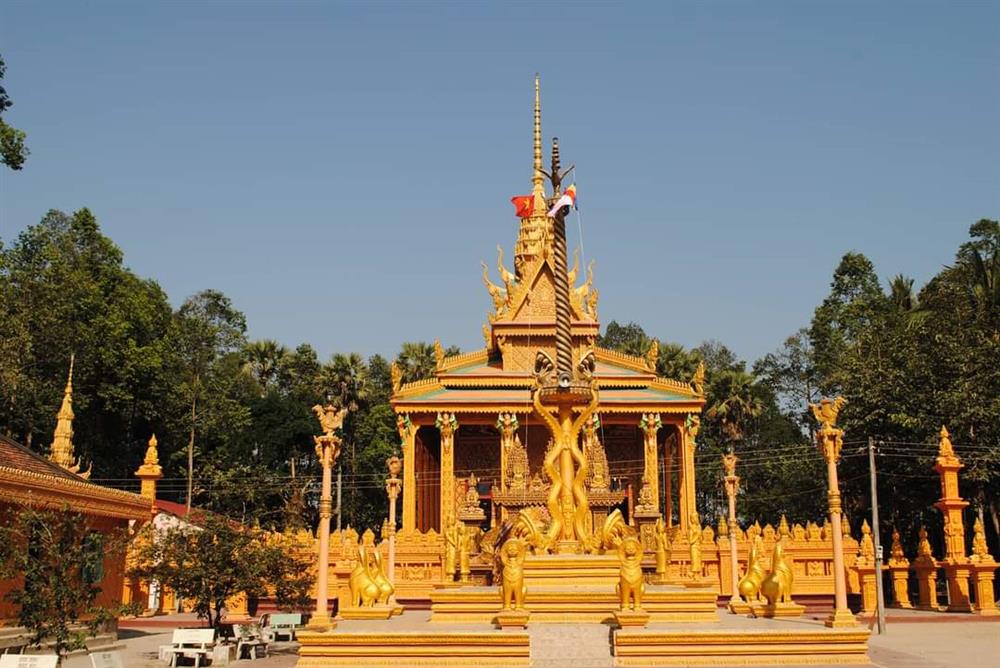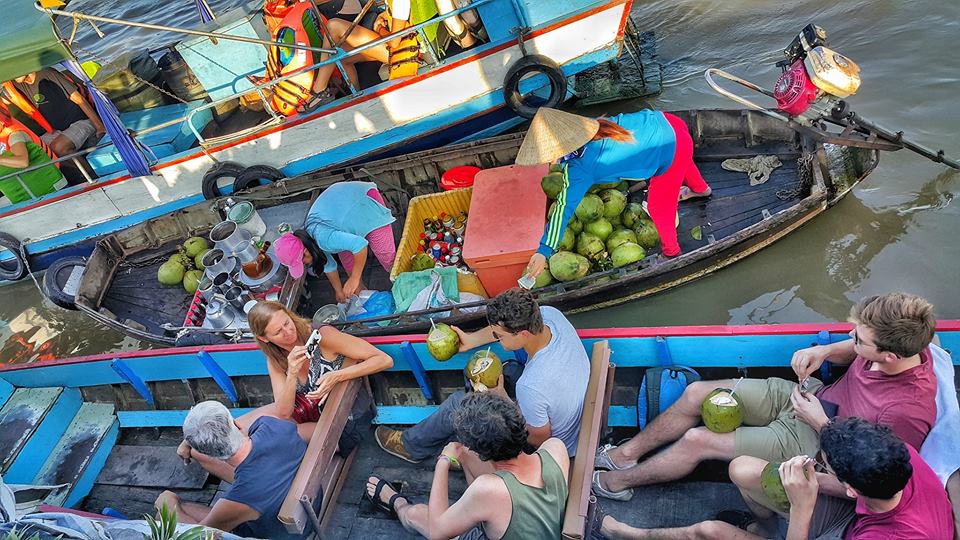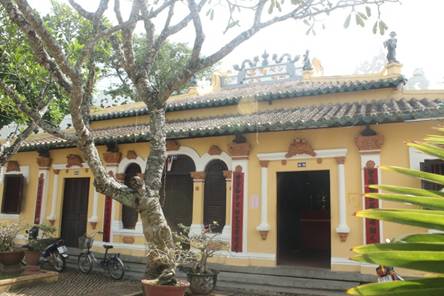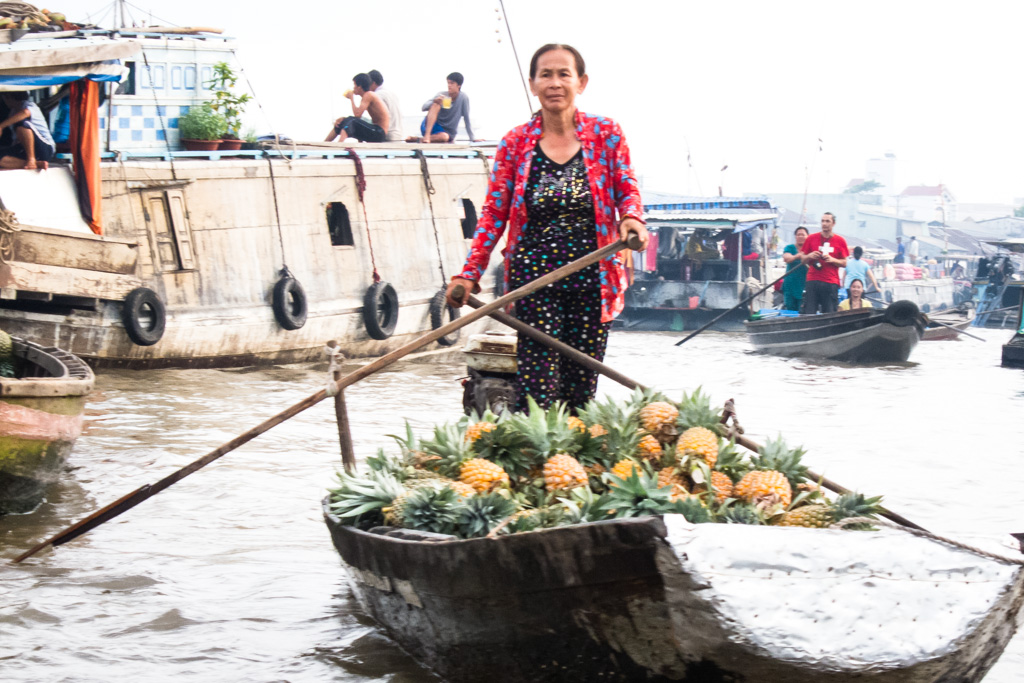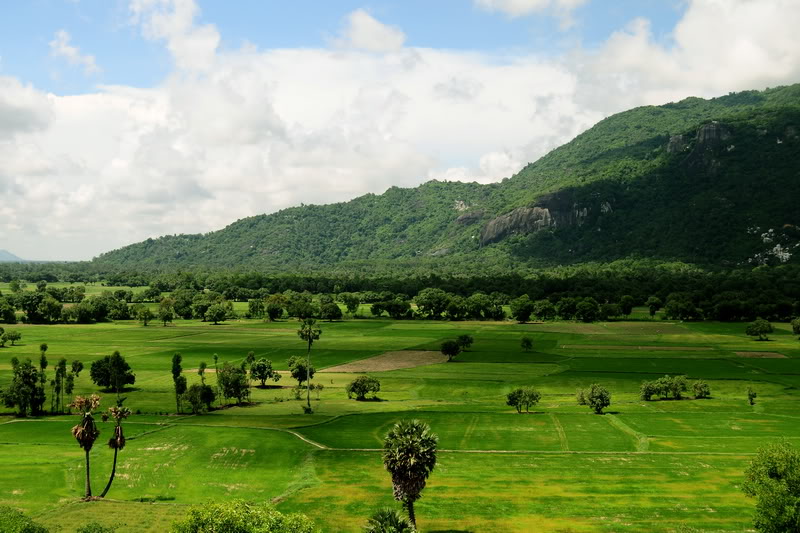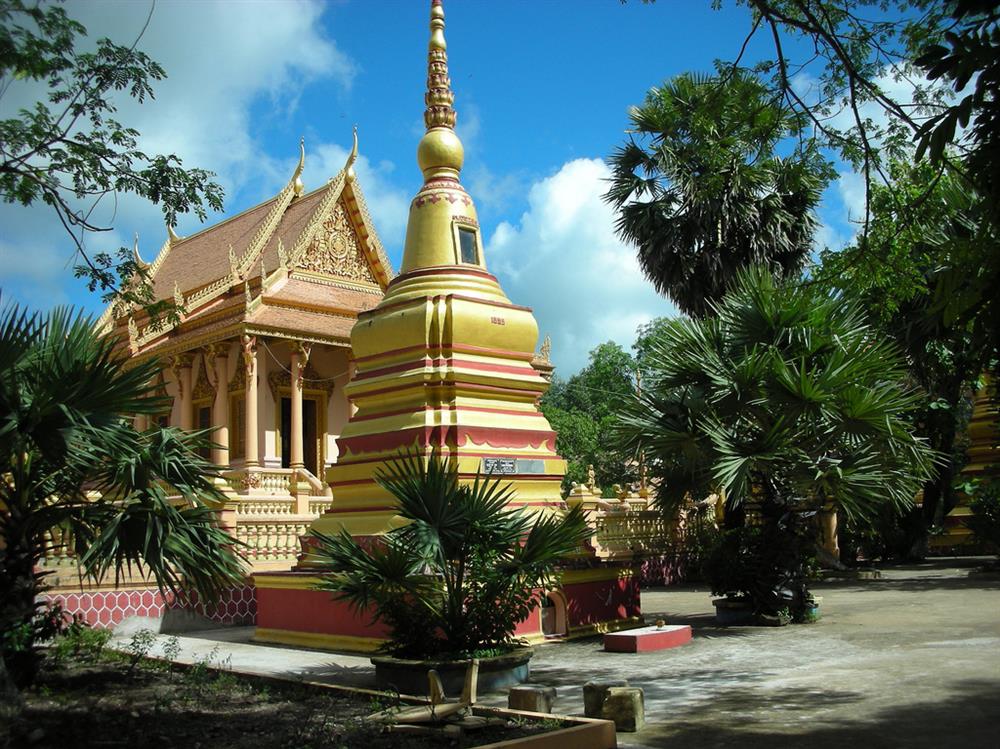Location Of Kon K'Tu Village Or Ba Na Village
Kon K’tu village or Ba Na village is located in the Central Highlands of Vietnam – province of Kon Tum.
It is peaceful and friendly village located in Dak Rowa commune, Kon Tum city. People called Ba Na village because Ba Na people live crowded here. The village lies beside legendary Dak Bla River backflow from the east to the west, while the other rivers of our country flow from the west to the east before flowing to the sea…

Kon K'Tu Village
From Kon Tum City, there are many roads to the village of Ba Na. But most tourists chose to cross the suspension bridge Kon Klo. This is considered the largest suspension bridge in Central Highlands, linking the downtown area with the village was built on the mountainside. From here, tourists walk about 6 kilometers to the village of Ba Na. Roads are paved, some parts are damaged, but the 30 – 40 seat buses can go inside. The best is riding motorcycles or bicycles to breathe fresh air and see the beautiful, green and winding road beside Dak Bla River.
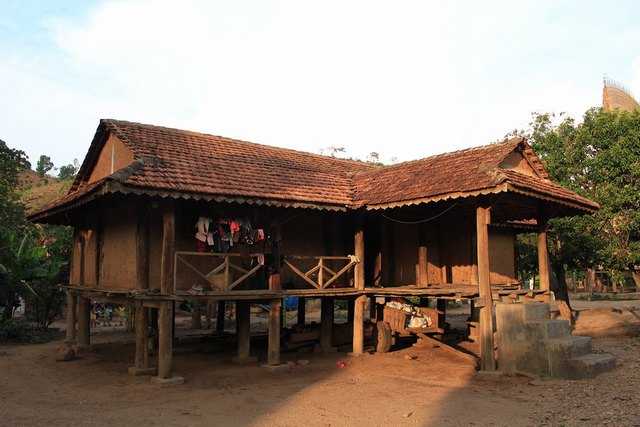
Stilt House of Ba Na People
Characteristics
Ba Na village has a lot of stilt houses which were built the square or rectangular ground, the stair up to the house is usually a wooden trunk hewed into sophisticated level.
Ba Na ethnic minority is one of three large indigenous people groups in the Central Highlands; they live mostly in Kon Tum. Na Ba Kon Tum is the name of Ba Na people community concentrated in Kon Tum city. According to Ba Na language, Kon means village, Tum means of lake and pond. Kon Tum is a village having many ponds and lakes.
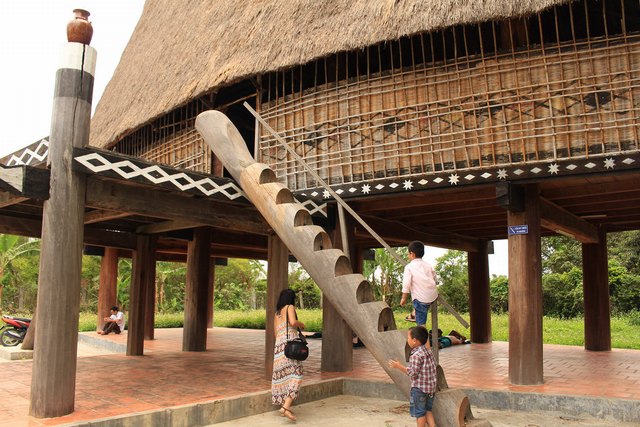
Traditional house of Ba Na people
Visiting the village of Ba Na, tourists can see a lot of stilt houses on flat ground, the stair of the house were made by a wooden trunk. Ba Na is the first ethnic minority group in the Highlands known use of writing in the life and use of cow and buffalo for plowing. But they have not known how to organize the life in scientist way, rice pounding is just enough to eat every day. In the past, the Ba Na had good hunting traditions; when you visit any family, you can see they have a few solid wooden crossbows.
It is in the same with many other ethnic groups in the Central Highlands, in the middle of Ba Na stilt house always has a red charcoal fire. Kitchen is the center of activities of all members in the family.
Men in Ba Na village often have scar on the chest. It is the scar which was made by their own of taking the fire or embers pressed on their chest when have the dead in the house to mourn the deceased.
Tourism Activities
Travel services in Ba Na village have been developed for a long time and many people know about it. Every day, many tourists have visited the village, mostly foreign tourists. But absolutely there are not unsettled situations in the souvenir stalls, food stores; or the situation of hawkers and beggars harassing tourists.
The children in the village say “hello” when they meet strangers and then going to play with their friends. Adults also greet in English or nod with a friendly smile and continue their work. That is great and different impressive in this communal tourist village.
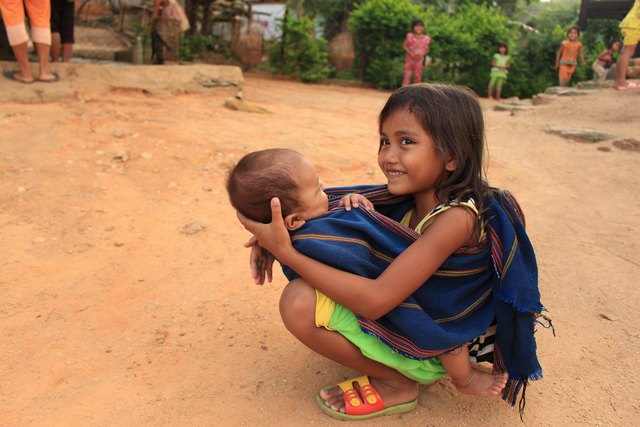
Ba Na People
Because of that friendliness, visitors feel very safe when walking leisurely on the small winding roads in the village. When tourists need to learn about life, customs and culture of the village, they may suddenly ask local people and receive enthusiastic responses.
The most important thing tourists should not be missed in the village of Ba Na is communal house with soaring ax-shaped roof in the middle of the village. Through the wooden stairs leading up to the floor, tourists are greeted warmly. Gongs are played here beside the jars of Can wine with grilled chicken or pork. Ba Na people are friendly. They called tourists are brothers and invite wine, meat and started to tell the story about their life as long intimates just met again.
Visitors can stroll around the village after enjoying the art of gongs and traditional dances. Everyone is impressed with rustic stilt houses. Stilt house of Ba Na people looked sure and steady. Crossbeam and columns were made of wood taken from the forest about ten years ago. Now, the Ba Na does not cut trees from the forest any more. In the village, there are still many houses with clay wall. Old house were made from clay mixed with straw as in the delta. Others were built surely of brick but they still remain the style of traditional stilt houses.
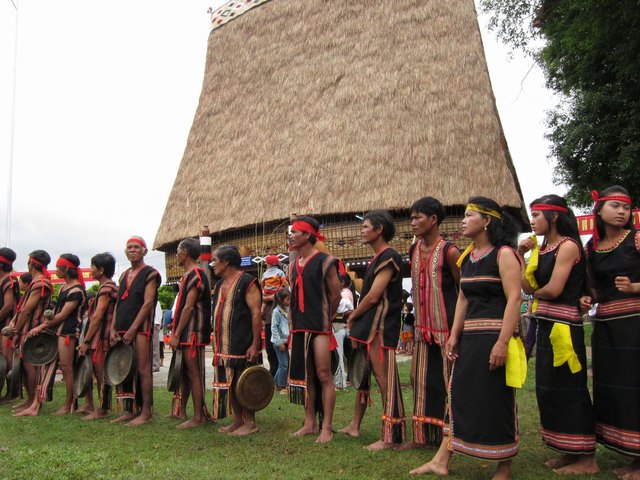
Community activities
If you go in the morning, when the sun has just splashing on the patio, tourists will find the olds with wrinkles of time etched on their face sitting on the front porch. White hair flies in the wind. They were dressed in shawls woven from Brocade. Surely photography enthusiasts will spend hours in front of the peaceful scenery. The olds do not have to work in the plantation, so they should be able to sit for hours to chat with tourists or sitting for tourists taking pictures without taking remuneration.
Source: Internet










